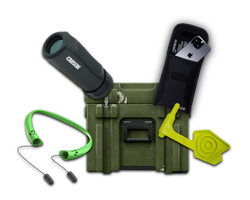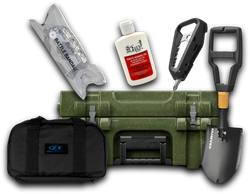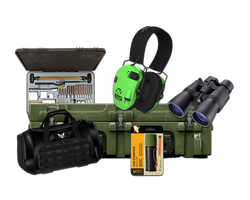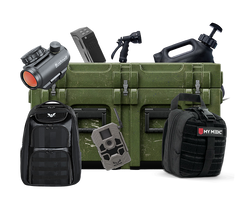How to Repair Sleeping Bag Rip: A Comprehensive Guide
Table of Contents
- Introduction
- Understanding Your Sleeping Bag's Material
- Tools and Materials You Need
- Step-by-Step Guide: How to Repair Sleeping Bag Rips
- Conclusion
- FAQ
Introduction
Imagine this: You're out in the wilderness, surrounded by the beauty of nature, ready for a night under the stars. You settle into your sleeping bag, only to discover a rip that could turn your cozy retreat into a chilly nightmare. Whether it’s a small tear from a campsite mishap or a larger gash from rough handling, knowing how to repair sleeping bag rips is a skill every outdoor enthusiast should master.
Sleeping bags are essential gear for camping, and their longevity can often be compromised by wear and tear. With the right approach and tools, you can extend the life of your sleeping bag significantly, saving you from unnecessary expenses and ensuring your comfort during those outdoor adventures.
In this guide, you will learn effective methods for repairing rips in sleeping bags—ranging from basic sewing techniques to using specialized patch products. We will explore the materials needed, step-by-step repair processes, and tips for preventing future damage. By the end of this post, you will have the knowledge and confidence to tackle any sleeping bag rip with ease.
Let’s delve into the specifics of how to repair sleeping bag rips effectively, covering everything from minor tears to significant damage.
Understanding Your Sleeping Bag's Material
Before jumping into the repair process, it’s crucial to know the type of material your sleeping bag is made of. Sleeping bags typically use nylon or polyester fabrics, which can be either ripstop or regular. Understanding the material will dictate the repair method you choose.
Types of Sleeping Bag Materials
-
Ripstop Nylon: This fabric features a grid pattern that prevents tears from spreading. If you have a ripstop sleeping bag, you can be more aggressive with repairs since the fabric itself is designed to withstand some damage.
-
Polyester: Generally less expensive and slightly heavier than nylon, polyester can also be durable but may not hold up as well under stress. Repairs need to be handled with care to avoid further damage.
-
Down vs. Synthetic Insulation: If your sleeping bag contains down insulation, be particularly cautious as rips can lead to down leakage. Synthetic insulation is more resilient and easier to repair but still requires careful handling.
Knowing the material will help you choose the right repair method and materials.
Tools and Materials You Need
Having the right tools and materials on hand is crucial for a successful repair. Here’s what you will need:
- Sewing Kit: A needle and thread suitable for the fabric type (nylon or polyester). Use a thread that matches the color of your sleeping bag for a seamless repair.
- Fabric Patch: A piece of fabric that matches your sleeping bag’s material, or specialized repair patches like Tenacious Tape or Tear Aid.
- Scissors: For trimming frayed edges and cutting patches.
- Adhesive: A fabric adhesive or seam sealant, especially useful for nylon and down bags.
- Straight Pins: To hold the fabric in place while you sew or adhere patches.
- Iron: If using iron-on patches, an iron will be necessary to activate the adhesive.
Step-by-Step Guide: How to Repair Sleeping Bag Rips
1. Assess the Damage
Before you begin, inspect the rip closely. Determine whether it’s a small hole, a seam split, or a larger tear. Understanding the nature of the damage will influence your repair strategy.
2. Clean the Area
Ensure the area around the rip is clean and dry. This will help the adhesive or stitches hold better, ensuring a longer-lasting repair.
3. For Small Rips and Holes
Using a Patch:
- Cut a patch: Use a fabric patch or Tenacious Tape cut to size—make sure it's at least half an inch larger than the rip on all sides.
- Round the edges: To prevent peeling, round the corners of the patch.
- Apply the patch: Adhere the patch over the rip. If using adhesive, apply it to both the patch and the fabric. Press down firmly from the center outwards to eliminate bubbles.
Using a Needle and Thread:
- Sew the rip closed: If you prefer sewing, use a whip stitch or a straight stitch to close the rip. For best results, use a small needle and thread that matches the fabric.
- Secure the edges: Make sure to backstitch at the start and end to secure your stitching.
4. For Larger Tears
Reinforcing with a Patch:
- Prepare the area: Cut away any frayed edges to create a clean surface.
- Use a larger patch: If the rip is sizeable, consider using a larger fabric patch or multiple patches to cover the area effectively.
- Sew or adhere the patch: Follow the same steps as for a small rip, ensuring the patch overlaps the edges of the tear adequately.
5. Repairing Seams
If the rip occurs along a seam, follow these steps:
- Align the edges: Pin the edges of the seam together.
- Sew the seam: Use a straight stitch along the original seam line to reinforce it. Make sure to backstitch at both ends.
6. Finishing Touches
Once your patch or sewing job is complete, inspect your work. If using adhesive, allow it to cure according to the manufacturer’s instructions.
7. Prevent Future Damage
To prevent future rips, always handle your sleeping bag gently. Avoid placing sharp objects near it and store it properly. Here are some tips:
- Use a storage sack: Always store your sleeping bag in a breathable cotton or mesh sack rather than compressing it in its stuff sack.
- Regular inspections: Check your sleeping bag regularly for wear and tear, addressing any issues promptly.
Conclusion
Repairing a rip in your sleeping bag doesn’t have to be a daunting task. With the right tools, materials, and techniques, you can restore your gear to functional condition and extend its lifespan. Remember that prevention is key; by taking care of your sleeping bag and handling it with care, you can minimize the chances of future damage.
As you venture into the great outdoors, being prepared with knowledge about gear maintenance is essential. Not only does it save you money, but it also enhances your outdoor experience by ensuring your comfort and safety.
If you’re interested in top-quality tactical gear, including sleeping bags and other outdoor essentials, consider exploring the Crate Club's offerings. With curated gear delivered monthly, you’ll always be equipped to tackle any adventure. Check out Crate Club's Subscription Services and Shop for the best in survival tools and equipment.
FAQ
What is the best tape for repairing a sleeping bag?
The best options for tape repairs include Tenacious Tape and Tear Aid, which are designed specifically for outdoor gear. They provide durable, waterproof repairs that can handle the elements.
Can I use duct tape to repair a sleeping bag?
While duct tape can be used in a pinch, it is not recommended for long-term repairs as it can leave behind a sticky residue and may not withstand washing or heavy use.
How do I know if my sleeping bag is beyond repair?
If the insulation is spilling out, or if the fabric is extensively damaged and cannot be patched effectively, it may be time to replace your sleeping bag.
Is it safe to wash a sleeping bag after repairs?
Yes, but use a gentle cycle and cold water. Avoid high heat when drying, as this can damage both the fabric and insulation. Always check the manufacturer's care instructions.
Should I take my sleeping bag to a professional for repairs?
If you’re uncertain about your abilities or if the damage is extensive, seeking professional repairs can be a wise choice. Many outdoor gear companies offer repair services that can restore your bag effectively.
Share this article



